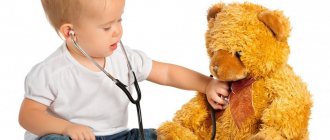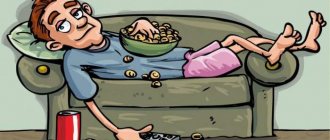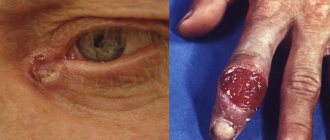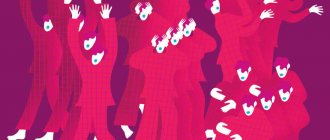This topic is perhaps one of the most relevant and painful today.
Drug addiction is a person’s dependence on various substances that cause a state of euphoria: high spirits, a state of pleasure that does not correspond to real circumstances, and leading to the destruction of mental and physical health. Drugs are of plant and chemical origin. The most famous are: morphine, heroin, LSD, hashish (anasha), alcohol and tobacco, etc. Despite the variety of drugs, they all cause addiction, which can be mental and physical. Dependence is formed by any method of drug use: injecting into a vein, snorting into the nose, smoking, ingestion, etc. No one knows when a person who starts using drugs will develop an addiction. But it is reliably known that even one-time use can lead to psychological dependence, which, once formed, can remain for life.
A person who uses drugs thinks that he can always stop in time. However, in the vast majority of cases, the experienced state of euphoria and pleasure leads to repeated use of the drug, which becomes systematic.
Drug addiction is a serious disease. Unlike tobacco and alcoholic beverages, the use of narcotic substances in Russia is prohibited by law. Drug use causes mental and physical disorders - distortion of worldview, personality changes, severe diseases of organs and body systems. Drugs weaken the immune system and deplete the body. Contribute to the transmission of serious diseases: viral hepatitis B, C and D, HIV / AIDS.
The life expectancy of a drug addict in Russia after the onset of addiction in our country is 5-7 years.
How does drug addiction progress?
There are three stages in the development of drug addiction:
• the first stage - the appearance of mental dependence - is characterized by the body becoming accustomed to the drug and a decrease in its euphoric effect with repeated doses. Therefore, in order to experience the same vivid euphoric sensations, a novice drug addict has to increase the dose of the drug. At the same time, in the intervals between taking the drug, the patient experiences a feeling of dissatisfaction, discomfort, his performance decreases, irritability appears, all thoughts are aimed at achieving one goal - to receive new doses of the drug. The first stage of drug addiction (depending on its type) lasts relatively short time - from 2 to 6 months.
• the second stage is the emergence of physical dependence, when, as a result of stopping drug use, various disorders of the patient’s mental and physical health occur. Long-term states of discomfort, anxiety, and dissatisfaction appear. Patients experience a runny nose, sneezing, watery eyes, and a feeling of heat followed by chills. Muscle pain and leg muscle cramps appear. Appetite decreases sharply. Vomiting, diarrhea, and pain in the stomach and intestines may occur. The patient becomes restless, tearful and even angry. The acute period of abstinence can last up to 4-5 weeks, and gradually (in case of abstinence from taking the drug) the patient returns to a normal state. At this stage, the dose of the drug used increases sharply, which does not cause pleasant sensations and serves only to get rid of withdrawal symptoms.
• third stage - exhaustion of all body systems. Due to prolonged poisoning of the body with the drug, the patient develops dyspeptic disorders, the appetite completely disappears, vomiting and diarrhea are regularly repeated, which leads to sudden weight loss. Patients at this stage of the disease do not show interest in life, have slow speech, poor coordination of movements, and have a shaky, stumbling gait. The appearance of the patients is characteristic: due to exhaustion, dry skin, advanced caries, brittle hair and nails, middle-aged and young patients look like very old people. In the final stages of drug addiction, disorders of the digestive and cardiovascular systems increase, and exhaustion increases. Patients die, as a rule, from total degeneration of the heart muscle, nephropathy or associated infection (AIDS, hepatitis).
Opiate group
The most popular and long-used drugs are opiates. They are natural, obtained from poppy seeds, and synthetic, which contain chemical compounds. This is the largest group of substances that cause euphoria and have a significant negative impact on health.
- Poppy straw is crushed raw material obtained from poppy stems and pods. The poppy seeds themselves are not classified as stimulants, since they do not contain narcotic components.
- Acetylated opium is a dark brown solution with a vinegar odor. It is obtained as a result of a combination of chemical compounds with plants and the reactions occurring in them. This is a ready-to-use drug.
- Raw opium is juice from the poppy plant treated with special compounds; it is used as a basis for preparing an acetylated solution. The substance itself looks like a plasticine mass of different shades from white to brownish. Buy the mass in the form of balls.
- Methadone is a synthetic substance of the opium group, potent and more dangerous than the previous three types. External forms are powder or solution. Procopsiphene and meperidine also fall into this category.
- Semi-synthetic opiates are heroin, hydromorphine and codeine.
- Desomorphine is a new and cheaper narcotic psychotropic than heroin. It is produced illegally in makeshift laboratories from codeine-containing medicines. It has a catastrophic effect on health and completely destroys the body in a short period of time.
Who is predisposed to drug addiction?
People who are prone to a particularly risky lifestyle are predisposed to drug addiction:
- Often in conflict with people around them (in public places, at home, at work);
- Those who do not know how to gain trusting, warm relationships with other people, with their own family;
- Autistic, withdrawn;
- Neglecting their own health;
- With a weak immune system;
- Prone to painful memories, the return of painful emotions associated with the past. If such people get a drug during the period of the most acutely experienced painful emotion of the past, they receive a strong and deep experience of compensation for this emotion and become dependent;
- Without noble life values.
Harm from cannabinoids
The onset after a smoked dose begins half an hour or earlier; for some, this period is only 10 minutes. It is accompanied by feelings of life being full of events and one’s own need. Senses are heightened, the person sees the world in bright colors, his positive perception of music and art increases, and sexual arousal increases.
People like such phenomena and cannabinoids gradually become a vital necessity for the addict. However, intoxication from a large number of smoked mixtures sooner or later occurs, and the person experiences negative consequences and deterioration of the condition. Patients dependent on this group of psychostimulants often develop lung cancer.
You can identify a person who uses cannabinoids by the following signs:
- sweetish odor from clothing, hair, mouth and breath;
- causeless gaiety, constant or paroxysmal;
- exaggerated appetite;
- red eyes that look bloodshot.
Reasons for drug use.
Drug use has become a worldwide problem in recent years. Drug addiction mainly affects young people, teenagers, and girls. Adolescence is considered a particularly dangerous age for taking up drugs – the age of change and character breakdown. A teenager's changeable mood, with sharp fluctuations, and excessive vulnerability create conditions for his involvement in drugs and make him easy prey for criminal adults, drug dealers, and street “parties.”
The most common causes of drug use in adolescents are:
- Neglect, leaving the child to his own devices, indifference on the part of adults
- Excessive care throughout childhood, constant control by adults and pressure on the child, leading to the formation of low self-esteem
- The desire to be an adult and prove your independence
- The desire to be “like everyone else” in the group, the lack of one’s own opinion, the teenager’s inability to say “No!”
- The desire to be “bad” in response to constant pressure from parents, or, conversely, in order to attract attention.
- Curiosity (“you have to try everything”)
- Idleness, inability to occupy oneself, lack of interests, hobbies, etc.
Withdrawal
Substances of natural origin and drugs related to drugs interfere with the body's metabolic processes. All organs and systems are poisoned, causing them to quickly wear out. In such a situation, you will not be able to cope with addiction on your own. A person will need treatment in a drug treatment clinic, because hard drugs and their use cause serious consequences:
- Impotence and infertility in men. Women's reproductive function may also deteriorate.
- The formation of ulcers, skin rotting, and the development of gangrene due to constant injections.
- The birth of children with disabilities even after a couple of generations.
- Complete destruction of a person's personality. All he cares about is where to get the next dose.
- Death due to an overdose of narcotic drugs or substances.
Danger signals (memo for parents)
Unexplained absences.
The child withdraws from his parents, often disappears from home for a long time, or locks himself in his room. Questions, even the most delicate ones, cause him to burst into anger.
Friendship, communication.
The child’s social circle changes, old friends disappear, new ones appear, whom he does not invite home or introduce to his parents. The child often has strange conversations on the phone, does not speak openly in the presence of strangers, uses hints, jargon, and conventional “codes.”
Mode changes.
Late going to bed, waking up later, closer to lunch; fluctuations in appetite - either suppression or increase, with a preference for sweets, chocolate; the emergence of the habit of washing in the bathroom for a long time, sitting on the toilet;
Change in appearance.
A new, previously unusual way of dressing appears: wearing clothes with long sleeves even in hot weather, the desire to insulate yourself excessively;
The character of the child.
The child's character changes dramatically. He ceases to be interested in what used to matter: family, study, hobbies. Irritability, hot temper, capriciousness, selfishness, deceit, and secrecy appear. There is a sharp change in mood: now he is full of energy, cheerful, joking, now he becomes passive, lethargic, gloomy, whiny.
Theft. Concealment.
The child has financial problems. He often asks his parents for money, but cannot explain why he needs it. Money and things are gradually disappearing from the house. At first this may not be noticeable; disappearances in the family are explained by chance (lost, forgot where they put it). Then the disappearance (of video equipment, for example) is difficult to hide.
Child's personal room.
The bedroom is constantly cold, the room is often ventilated. There are signs of using incense, air fresheners, breath fresheners, perfume and cologne. The child tries not to let anyone into his room.
Unusual condition of the child.
Often a child may appear to be intoxicated, but without the smell of alcohol. Coordination of movements and speech may be impaired, ridiculous laughter may appear, and pupils may be constricted or dilated. The smell of glue comes from the clothes.
The assumption that a child is using drugs causes strong negative emotions in parents, followed by hasty actions. This may make the situation worse.
Barbiturates - sedatives and hypnotics and harm from them
They potentiate each other’s effects and are used in different modes. For example, they are often taken in a single dose to produce euphoria or relaxation. Getting used to them causes negative changes in physical condition and psychological status.
The person becomes relaxed and his reactions to danger decrease. Motor activity becomes sluggish, attention is absent, drowsiness and passivity appear. These phenomena are replaced by excitement and anxiety, dizziness is observed. The main danger is that death may occur during sleep.
What to do?
1. Encourage a child who uses drugs to admit it to loved ones.
You must be completely sure that your child is using drugs. First of all, stay calm. There is no need to panic. Yelling at the child, beating, or threatening will not achieve anything. Talk to your child as equals. During a confidential conversation, you will be able to better understand your child, find out his views and feelings, as well as the possible reason for using drugs. Try to decide whether you can cope with the situation yourself or whether you need to seek advice from specialists (psychotherapist, psychiatrist-narcologist) in order to develop individual tactics of behavior.
2. Make an effort to involve your child in treatment.
Gather together all interested and significant people for the patient (relatives, friends, spouses, employees, teachers, etc.) to join forces. Contact a specialist who will suggest methods of inducing treatment. There is a specially developed method of encouraging a drug addict to seek help, which is called “intervention”. Each of the participants in the intervention (parents, spouse, child, boss) tries to help the patient recognize the presence of a problem by reporting the changes in him and the changes in their lives that are caused by drug use. When the desired result is achieved, they offer a solution - treatment in a specific medical institution, a rehabilitation program. To do this, you must learn everything about clinics and specialists, diagnosis, treatment and rehabilitation of patients with drug addiction.
3. Avoid self-medication.
Under no circumstances should you allow your child to self-medicate using various medications recommended by someone around him. Competent and qualified treatment should be prescribed and carried out only by a specialist doctor.
4. Actively help your child during treatment.
Find time to communicate with your child frequently. Chat, talk about yourself, remember the happy moments you experienced together. Visit theaters, museums, sporting events together, help your child find something he likes, don’t leave him alone with himself and his problems. Set an example - stop smoking and drinking alcohol. Encourage your child's achievements, hobbies, and interests.
5. Monitor your child.
Monitor throughout treatment and for at least another year after completion. But don’t overdo it, give him some degree of freedom after 2-3 months of stopping taking drugs. Allow him to be out of your control for at least 1-2 hours. Talk to your doctor or psychologist about this.
Drug addiction mortality statistics
Official statistics according to the Federal Drug Control Service of the Russian Federation present the following data:
- 70,000 people die from drug addiction in Russia every year;
- 86,000 people become drug addicts;
- the average age of a drug addict is 28 years old, that is, this is the age to which drug addicts live;
- 70% of dead drug addicts are teenagers and young adults.
These figures indicate that the situation has long become threatening, so the organization of drug treatment needs to be given increased attention at the state level. Our clinic is a certified institution, we operate under a license and participate in all government anti-drug programs.
Immediate and long-term consequences of alcoholism and drug addiction for the individual and society
From the point of view of its effect, alcohol can be classified as a drug. But in most countries it is simply a food product freely distributed in the retail chain.
Permissiveness has become the main cause of chronic alcoholism. This disease quickly destroys health, causes personality degradation and leads to serious complications, often incurable.
The toxic effects of ethanol destroy the brain, liver, heart and other organs.
Drunkenness causes:
- Road traffic accidents.
- Criminal actions.
- Family scandals and divorces.
- Facts of violence against children and loved ones.
One alcoholic, by imposing his passion on others, leads to this vice from 4 to 8 people during his life. A drug addict has an even greater number of victims.
Most often, people suffering from addictions unite in communities. This is especially true for young people.
Treatment costs
In addition to paid drug clinics, government offices, dispensaries, and hospitals deal with drug addiction problems. The funds allocated for the maintenance of these institutions are a heavy burden for the budget. An officially registered drug addict seeks help and undergoes inpatient treatment several times a year. Some patients stay in the drug department for about 200 days. The cost of their stay is very high.
Providing treatment for overdoses at poison control centers is even more expensive. It should also be taken into account that drug treatment patients try to infiltrate other departments in order to gain free access to medications, thereby depriving other patients of necessary medications.
Literature:
- Medical, social and economic consequences of drug addiction and alcoholism: [monograph] / E. A. Koshkina [et al.]; Ministry of Health and Social Development of the Russian Federation, Nat. scientific Center for Narcology [and others]. – Moscow: Per Se, 2008. – 287 p.
- Socio-economic consequences of the spread of drug addiction in the region / A. A. Kuklin [et al.]; edited by A. A. Kuklina; Russian Academy of Sciences, Ural Department, Institute of Economics. – Ekaterinburg: Institute of Economics, Ural Branch of the Russian Academy of Sciences, 2007. – 175 p.
- Social consequences of drunkenness and drug addiction. Tasks of the permanent staff of educational institutions of the Ministry of Internal Affairs of Russia for the prevention and prevention of drunkenness and drug addiction in groups of cadets and students: educational manual / P. I. Ivakhov, A. M. Shcheglov. – Kaliningrad: Kaliningrad Law Institute of the Ministry of Internal Affairs of Russia, 2010. – 34 p.
Codependency and family problems
Another personal and social consequence of drug addiction is codependency. The problem often arises among spouses and cohabitants, parents of patients with addiction.
Signs:
- excessive preoccupation with the problems of a dependent relative;
- ignoring one's own needs;
- low self-esteem, pathological feelings of guilt;
- denial of the problem, inability to assess the situation critically;
- blind trust in everything the drug patient says;
- assistance in purchasing a new dose.
Codependents need the help of a psychologist. Otherwise, they will soon begin to use surfactants in the same way.
Drug addiction destroys many families. The drug addict perceives loved ones as a source of funds for the next dose. But at the same time he does not feel love, does not show care, does not worry about his children and spouse. Living next to a soulless, immoral, unpredictable person becomes unbearable.
Families of drug addicts often give birth to sick children who are of no use to anyone. They end up in orphanages and shelters and are raised on the streets. As a result, they turn into individuals dangerous to society.










